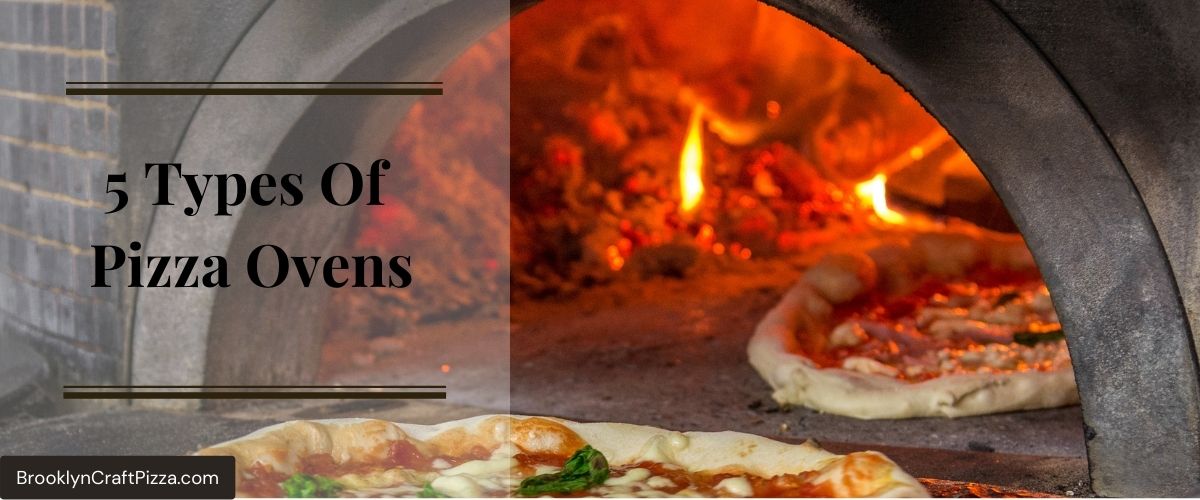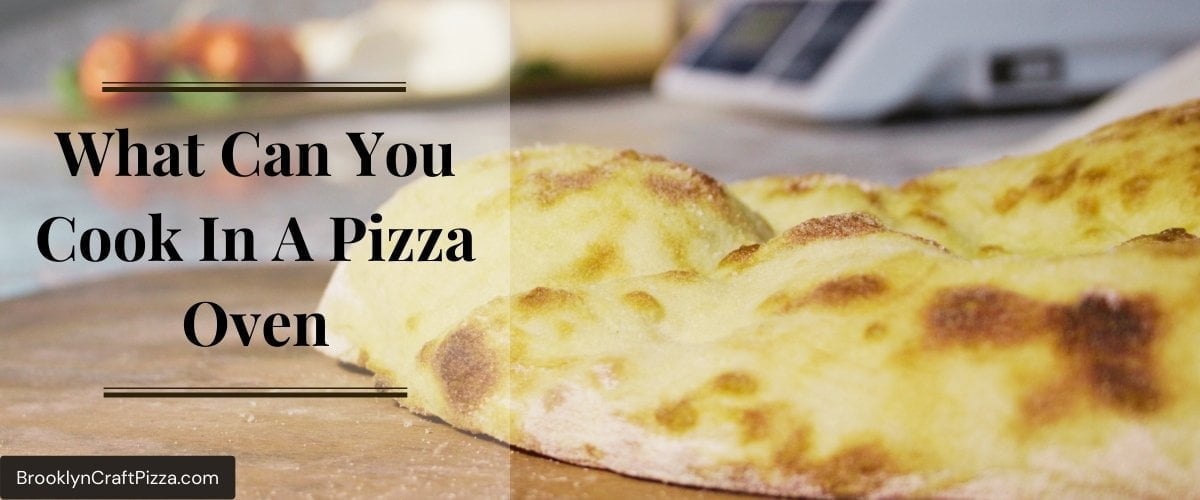When it comes to pizza, every bite is a delightful journey for our taste buds.
While toppings and sauce play a crucial role, the real magic lies in the crust. And if there’s one part of the crust that truly steals the show, it’s the cornicione.
In this article, we’ll explore the mouthwatering world of cornicione, its origins, its role in pizza making, and how it contributes to the overall pizza experience.
Join us as we unravel the secrets behind this crispy crown that elevates pizza to new heights of deliciousness.
What is Cornicione?
To understand the significance of cornicione, we must first define it.
Cornicione refers to the outer edge or rim of the pizza crust. It’s the part that surrounds the toppings and is often thicker, fluffier, and more puffy compared to the rest of the crust. Cornicione is what makes every pizza unique, and its texture and flavor can vary depending on regional preferences and baking techniques.
The Origins of Cornicione
Cornicione traces its roots back to Naples, Italy, the birthplace of pizza (no, pizza isn’t from China).
Neapolitan pizza, known for its simplicity and high-quality ingredients, is characterized by its light, airy cornicione. This traditional style of pizza, often cooked in a wood-fired oven, creates the perfect environment for achieving the desired cornicione texture.
Over the years, Neapolitan pizza has gained global recognition, and with it, the appreciation for the cornicione.
The Role of Cornicione in Pizza Making
The cornicione plays a vital role in the pizza-making process. It acts as a barrier, preventing the toppings from spilling over the edge while providing structural support to the pizza.
Additionally, the cornicione serves as a handle, allowing us to hold and enjoy the pizza without getting our hands messy. The thickness and texture of the cornicione contribute to the overall eating experience, creating a harmonious balance with the sauce, cheese, and toppings.
Crafting the Perfect Cornicione
Achieving the perfect cornicione requires skill, technique, and the right ingredients.
Traditional Neapolitan pizza dough consists of only four basic ingredients: flour, water, salt, and yeast. The dough is carefully prepared and left to rise slowly, resulting in a light and airy texture.
Skilled pizzaiolos know how to stretch and shape the dough, creating a well-defined cornicione with a slightly charred exterior and a tender interior.
Enhancing Flavors and Textures
While the classic Neapolitan cornicione is a culinary masterpiece in itself, some variations add extra layers of flavor and texture. Pizzaiolos often incorporate herbs, spices, or olive oil into the dough to enhance the taste and aroma.
Other techniques involve stuffing the cornicione with ingredients such as cheese, prosciutto, or vegetables, turning it into a delectable surprise waiting to be discovered with each bite.
Cornicione and Pizza Varieties
The cornicione adapts to different pizza styles and regional variations.
In New York-style pizza, the cornicione is typically thinner and crispier, providing a satisfying crunch.
Chicago’s deep-dish pizza boasts a substantial cornicione that acts as a sturdy base for its thick layers of toppings.
Each pizza style brings its own unique cornicione characteristics, making the crust an essential element in defining regional pizza preferences.
How to Make the Perfect Pizza Cornicione
The pizza cornicione, or crust, is a crucial element that sets apart an exceptional pizza from an ordinary one.
Achieving the perfect cornicione requires attention to detail and understanding the techniques involved. Here’s the art of making the ideal pizza cornicione, exploring the dough, fermentation process, shaping techniques, and baking methods that contribute to creating a light, airy, and flavorful crust. Get ready to elevate your pizza-making skills and enjoy the satisfying crunch and texture of a perfect pizza cornicione.
1. Selecting the Right Dough
Choosing the right dough is the foundation for an excellent cornicione. Opt for a high-quality pizza dough recipe that consists of basic ingredients such as flour, water, salt, and yeast. Consider using high-protein flour, like bread flour or Tipo 00 flour, as it helps develop gluten, resulting in a chewy and elastic dough that rises well.
2. The Power of Fermentation
Fermentation plays a critical role in developing flavor, texture, and lightness in the cornicione. Allow the dough to ferment slowly in a cool environment, preferably overnight in the refrigerator. This extended fermentation process allows the yeast to break down the starches, creating complex flavors and airy pockets in the dough.
3. Proper Dough Handling and Shaping
When working with the dough, it’s crucial to handle it gently to preserve the trapped gases and prevent overworking. After the fermentation period, remove the dough from the refrigerator and let it rest at room temperature for some time to make it easier to shape. Lightly flour your working surface and gently stretch the dough using your fingertips or a rolling pin, being careful not to press out all the air.
4. Creating the Cornicione
To achieve a desirable cornicione, focus on stretching the dough primarily at the edges while keeping the center slightly thicker. Start by gently pressing your fingers along the edge of the dough, leaving a border of untouched dough. Gradually work your way around the circumference, stretching the edge outward while maintaining the center’s thickness.
5. The Art of Baking
Proper baking techniques are vital to achieving a perfect cornicione. Preheat your oven to its highest temperature and use a pizza stone or steel to provide even heat distribution. The hot surface helps generate a burst of steam when the pizza hits the oven, contributing to a crispy exterior. Slide the pizza onto the preheated surface and bake until the cornicione turns golden brown and the crust is cooked to your desired level.
6. Experiment with Toppings and Techniques
While the cornicione itself is a masterpiece, you can further enhance the flavor and texture by experimenting with toppings and techniques. Brushing the cornicione with olive oil or garlic-infused oil before baking adds an extra layer of flavor. Consider incorporating herbs, such as fresh basil or oregano, into the dough to infuse the cornicione with aromatic notes.
7. Enjoy!
Finally, take a moment to savor the fruits of your labor. Bite into the crispy and flavorful cornicione, enjoying the contrast between the airy interior and the slightly chewy crust. Let the symphony of flavors from the toppings, sauce, and cornicione dance on your taste buds, creating a truly memorable pizza experience.
Mastering the art of making the perfect pizza cornicione requires practice, patience, and attention to detail. By selecting the right dough, allowing for proper fermentation, shaping with care, and baking with precision, you can achieve a light, airy, and delicious cornicione that will elevate your homemade pizzas to new heights. So, roll up your sleeves, embrace the process, and prepare to enjoy the mouthwatering results of your pizza-making prowess.
The Cornicione Experience
When you savor a slice of pizza, the cornicione adds an extra dimension of enjoyment.
Its contrasting texture, whether soft and pillowy or crispy and chewy, provides a delightful interplay with the toppings and sauce. The cornicione is the part that leaves a lasting impression, enticing you to take one more bite.
It’s a testament to the artistry and craftsmanship that goes into creating the perfect pizza.
Final Word: Cornicione – The Crispy Crown of Pizza
In the world of pizza, the cornicione reigns supreme as the crispy crown that elevates every slice to new heights of deliciousness.
From its humble origins in Naples to its global popularity today, the cornicione has become an integral part of pizza culture. Whether you prefer a classic Neapolitan cornicione or enjoy exploring the diverse variations, one thing is certain – the cornicione will continue to captivate our taste buds and leave us craving for more.
So, next time you indulge in a slice of pizza, take a moment to appreciate the humble yet extraordinary cornicione that makes each bite truly memorable.
FAQs - How Big is a 16 Inch Pizza
What is a cornicione mean?
Cornicione is an Italian term that refers to the outer edge or rim of the pizza crust.
Why does pizza have cornicione?
Pizza has a cornicione to serve as a barrier, preventing the toppings from spilling over the edge, and to provide structural support to the pizza.
What is the cornicione of a Neapolitan pizza crust?
The cornicione of a Neapolitan pizza crust is typically thicker, fluffier, and more puffy compared to the rest of the crust. It has a light and airy texture, achieved through slow rising and wood-fired oven cooking.
What is the bottom of a pizza called?
The bottom of a pizza is commonly referred to as the "crust" or the "base."



